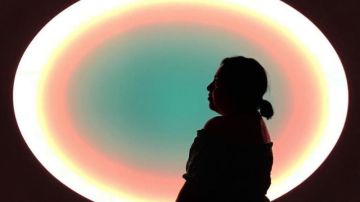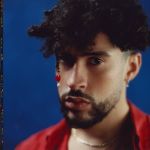Meet The Latina Empowering Communities of Color With Design
When we think about design usually, fashion or interior design comes to mind—but what most people don’t realize is that they actually interact with design every day

Photo: Courtesy of Diane Lindquist
When we think about design usually, fashion or interior design comes to mind—but what most people don’t realize is that they actually interact with design every day. Whether it’s the little icons you tap on your phone, newsletters, your favorite smoothie, or that purse you’ve been dying to buy, great design makes them all functional, beautiful and psychologically appealing. The things that separate masterful design from a novice include things like a firm grasp color, texture, and space but if you’re just an everyday person you’ll probably recognize good design based on how it makes you feel. Some branding just makes you feel good inside, right? In most forms of artistic expression there is an unmistakable emphasis on the artist’s eye, in reference to their own unique attention to detail and how they express that focus. It’s a preoccupation with frame of reference not lost on Diane Lindquist, whose perspective is remarkable not only because of the work she produces but because of the hurdles she’s had to overcome to produce her vision, both figuratively and literally.
When Lindquist was just 2 years old when she was diagnosed with retinoblastoma—a rare type of genetic eye cancer that usually develops in early childhood. Design isn’t something she was drawn to out of curiosity, her obsession with vision was truly out of necessity, “I have 0/20 vision, I see only out of one eye,” she tells HipLatina. “I had to do lots of testing to strengthen my vision. All the testing (and chemotherapy) was to make sure all the cancerous tissue was dead. So, basically from age 2 to 8, I was in and out of the hospital. The hospital became my second home,” and just as the hospital became her home the many tests Doctors performed on her vision with shapes, colors, and art became her universe.
“I wanted to be able to see what other human being saw with two eyes,” Lindquist says. “I tried to do much more with just one eye. I learned all the colors very well. The primaries and secondaries. I knew how to mix them, and which colors and which colors would turn into a different color. All those elements I had to learn. I spent hours drawing something, or just staring at something, because I loved the details of a particular thing and I didn’t want to miss anything around me,” she said.
Lindquist describes her life after the hospital, however, as a lot less colorful, since it was when she realized that re-entering the world also meant dealing with people eager to define and set limitations for her. “I was this little brown girl with an eye patch walking around with one eye, thinking that I’m normal, but I’m wasn’t. That meant the second half of my childhood became about getting into the arts. I was teased for how I looked, and art became my safe haven.” When doctors tried to label her as disabled her mother fought it aggressively because she didn’t want to narrow her daughters’ life path. “At some point, my mother was actually getting pressured by doctors to have me declared permanently disabled, but my mom pushed not to do that because that would have limited my life. She persisted in not allowing them to do that. She knew I could be just fine a way, and I’m glad she did that because without it I wouldn’t be the person I am now,”
Today her resume includes names like Facebook, Intel, NASA, Disney, JPL, Red Bull, and Hasbro—but, unlike most award-winning designers of her caliber, Lindquist is deliberate about working with small businesses and non-profits. “Half of my time, I dedicate to working with an agency called Team Friday whose clients consist of non-profits like LURN, CicLAvia, and Investing in Place. Team Friday’s focus is on building purpose, furthering causes and creating impact through collaboration and innovation. It’s a mission that I stand behind and love working for. The other half of the time I am at work with event smaller entrepreneurs like East LA-based Todo Verde and the larger companies you see listed on my resume and portfolio.”
It’s Lindquist’s commitment to the democratization and cultural competence of design that makes her work so visually compelling and true to the soul of where it comes from. In fact, this reporter didn’t truly grasp how important design is in not just creating an aesthetic, but a visual credibility. It’s something generally not afforded to people on the low end of the economic spectrum. To put it simply, great design can open doors and Lindquist routinely props them open by helping women and people of color compete on a different level through her own sliding scale system.
“We deserve good design. I don’t care if you’re poor, you deserve good design. Everybody does,” she says. “I think design is not just selling stuff, it’s really here to help. It’s here to make our lives easier and make us question why we’re doing things, why things are made a certain way, and how I can bring all my knowledge and expertise into my city and community,” she said.
It is also universally agreed, that like in all professional fields, design is in dire need of diversity. In 2016 a AIGA/Google Design Census found that 73% of graphic designers are white, 8% are Asian, 7% are Hispanic, and 3% are African-American—and that’s an improvement. Lindquist’s empathy and deeper understanding of POC communities comes from experience and is highlighted not only by virtue of being a Mexican-American woman but as a someone with disabilities who beat the odds.
She’s also the founder of GURL Museum Day, a community of girls that believe in and support girl art, which consists of guided tours of art exhibits throughout LA County. It’s a passion project that Lindquist says feeds a major part of who she is; an artist and an art lover.
“It might seem like hype, but it’s authentic to me, and that’s how I want to keep it. I don’t care about dozens of people knowing about it,” she says. “But I wanted whoever does come to feel it’s a place that’s safe and they can connect with women who are like-minded. A place they can enjoy the art and talk to gurls who like art. It’s a safe community of us coming together to express our feelings about art and that’s what it’s really all about.”
When it comes right down to it, this is the story of someone who says, “I can do it,” when everyone is telling her, “No you can’t.” It was especially difficult convincing her family that art and design were going to pay the bills. “My mother could draw, she could draw beautifully, but she didn’t know what to do with it, or how that can be something. So, to them, it was not a realistic thing to do, it’s not something you pursue,” Lindquist adds.
People with immigrant parents know all too well that when you step out of the traditional path things can get interesting. Naturally her mother wanted her daughter to do something with her Business Administration degree, but Lindquist doesn’t regret straying from the 9-5 path. And despite the fact that she minored in Graphic Design, just like the obsession she had with colors and shapes as a child, Lindquist is just as insatiable when it comes to learning everything about good design principles.
“I learned UX and UI design because I felt it was something essential. I thought to myself, ‘UX and UI, I could do that.’ I can design apps, develop websites, databases, strategic branding, logo and branding, art direction, photography, illustration, packaging
—I can do all of it,” she says.
If you’re wondering what’s next for someone who is always on that new, new—Lindquist says she is looking forward to embarking on a new journey with her husband. “I’m looking forward to motherhood. While we’re not pregnant quite yet, I feel like that’s the next big thing, becoming a mother,” she shares. Despite having her hands in many different projects she is still looking for new challenges and she hopes to bring more girls into the artistic fold.
“I’m still going to continue GURL Museum Day. I’m doing pop-ups, actually exhibitions…probably going to start later this year or next year, and then the following year, I have some stuff booked,” she said. “The older that I get, I think of how I want to spend my time with family, be able to nurture myself, nurture my family, and the community around me. I just realize at the end of the day what I want to do is make an impact. It’s within my bones, it’s where I came from.”
For more on GURL Museum Day, you can follow her Instagram here. For more on Diane’s work and obsession with visual culture, you can follow her here.

















